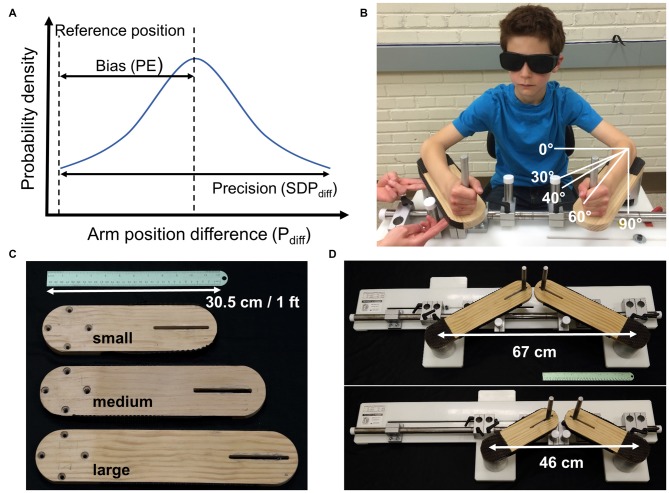Figure 1.
(A) Bias and precision are the two components of acuity. Shown is a hypothetical population or individual probability density function for limb position matching responses the difference between the match and reference arm angular positions (degrees; Pdiff). The reference position is the true position. Accuracy requires minimal or no bias (low position error (PE)) and high precision (low SDPdiff). (B) Experimental setup with a participant seated in front of the bimanual manipulandum. Here the experimenter passively moved the non-dominant, right arm and the participant actively matched the position with the dominant left arm. The white lines depict the reference, or start position of 30° for the left arm as well as the three target positions. (C) Interchangeable lever arms accommodated a wide range of forearm lengths from children to adults fitting forearms lengths between 15 and 35 cm. (D) The left lever arm was adjustable to accommodate differences in shoulder width.

